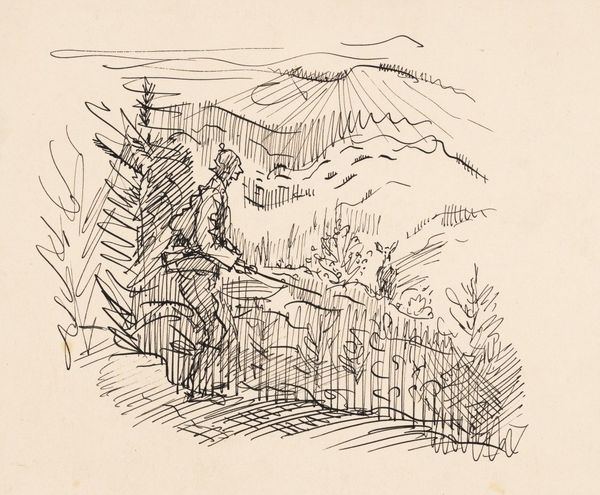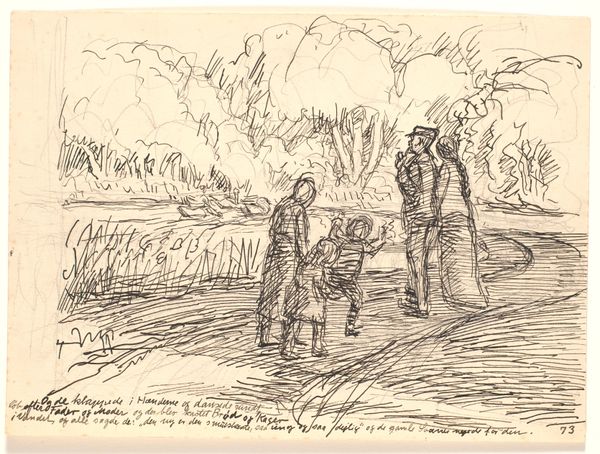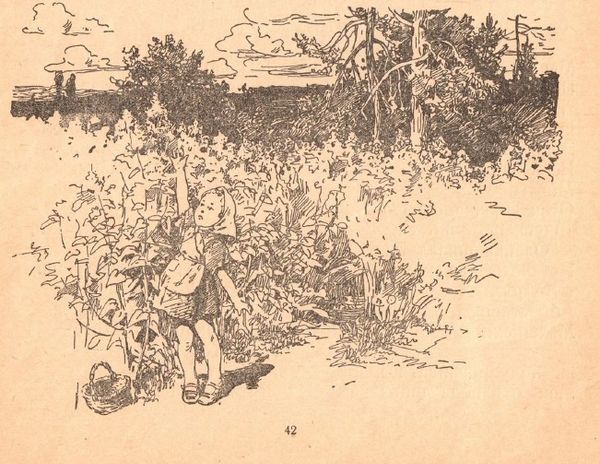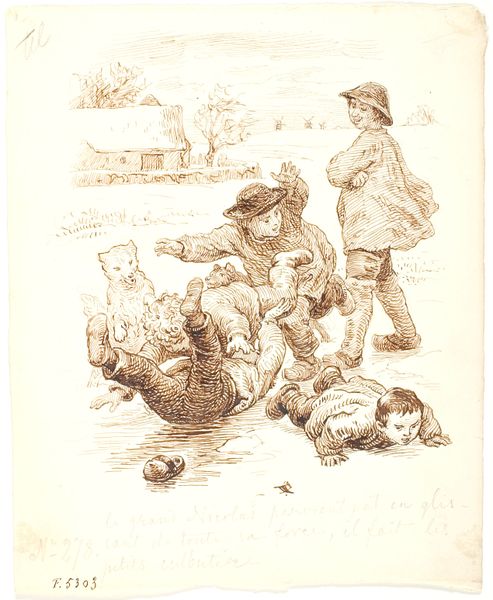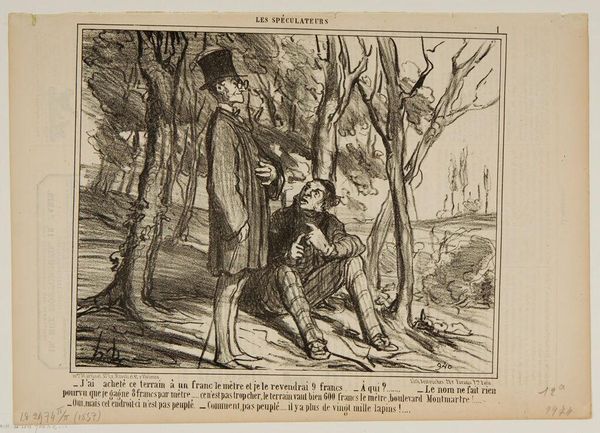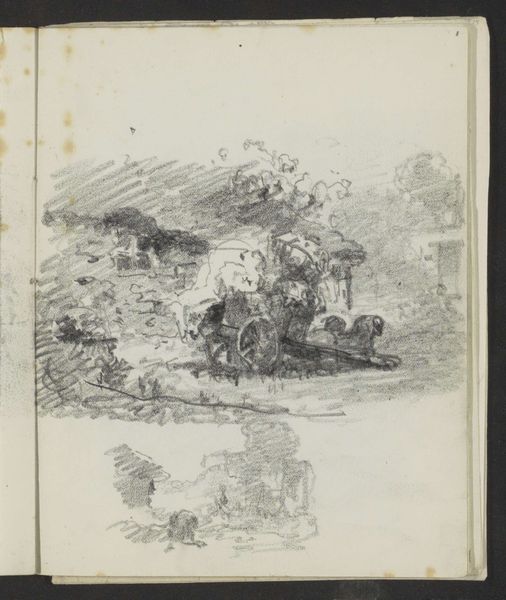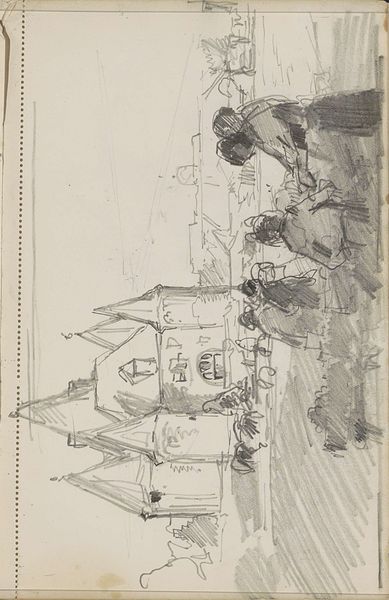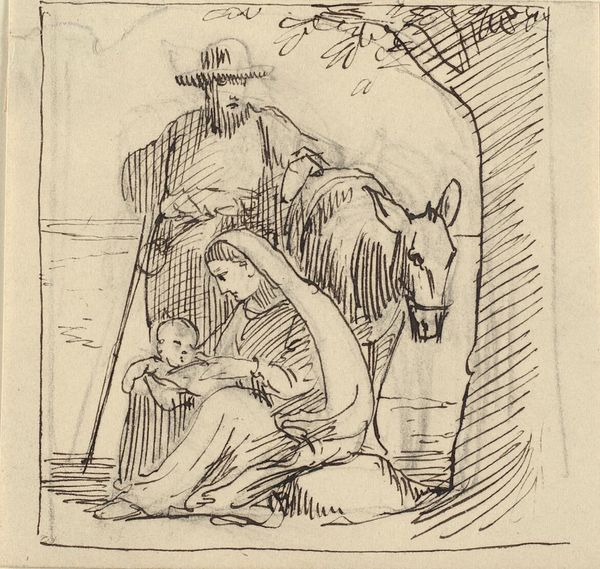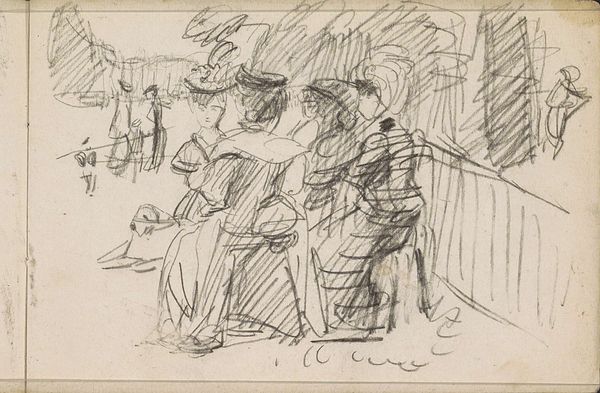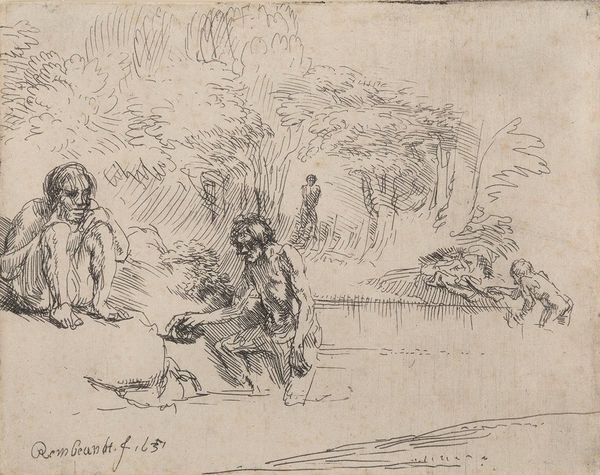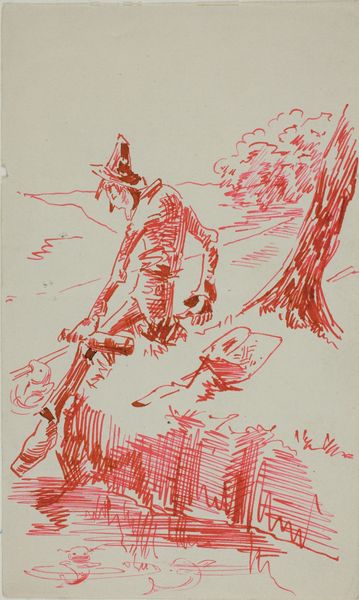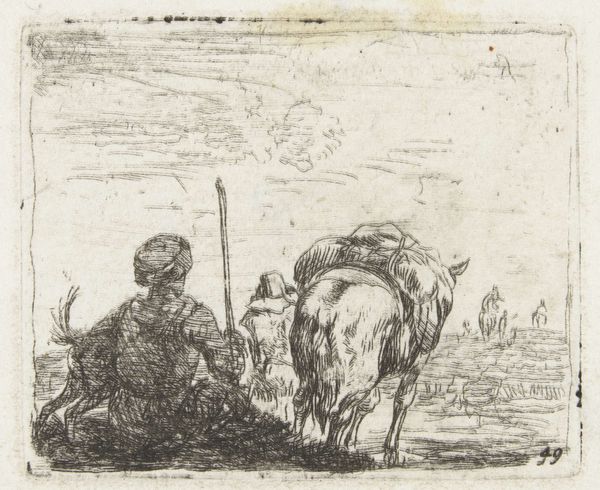
drawing, ink, pencil, pen
#
portrait
#
drawing
#
ink drawing
#
narrative-art
#
pen illustration
#
pen sketch
#
landscape
#
figuration
#
ink
#
pencil
#
pen
#
genre-painting
#
realism
Copyright: Public Domain: Artvee
Editor: Arnold Peter Weisz-Kubínčan's "Poor Family," created in 1940 using pen, pencil, and ink, strikes me as incredibly raw and immediate. The frantic lines almost vibrate with a kind of anxious energy. What do you see when you look at this piece? Curator: That frantic energy, as you call it, is exactly what grabs me too. It's a portrait, yes, but it's also a landscape of worry. Notice how the figures seem to almost merge with the environment, the lines blurring the distinction between them and the harsh realities of their surroundings. What kind of story do you imagine unfolded here? Editor: I imagine this family facing hardship during the time the art piece was produced. Their expressions seem somber. Curator: Indeed. The somber mood speaks volumes, doesn’t it? I’m drawn to the weight in those inked lines, and how they communicate such fragility despite the medium's inherent permanence. Consider, though, how this realism is achieved through such expressive mark-making. It is almost like emotional realism. Editor: So, you are saying that this work is both realism and deeply emotional. Curator: Precisely! It uses recognizable subject matter – a family, a landscape – but translates them through an emotional lens. What do you take away from this? Editor: That art can be both a reflection of reality and a powerful expression of emotion, merging to tell a story deeper than either could alone. Curator: Beautifully put! And perhaps, in that intersection, lies the most potent form of truth.
Comments
No comments
Be the first to comment and join the conversation on the ultimate creative platform.
